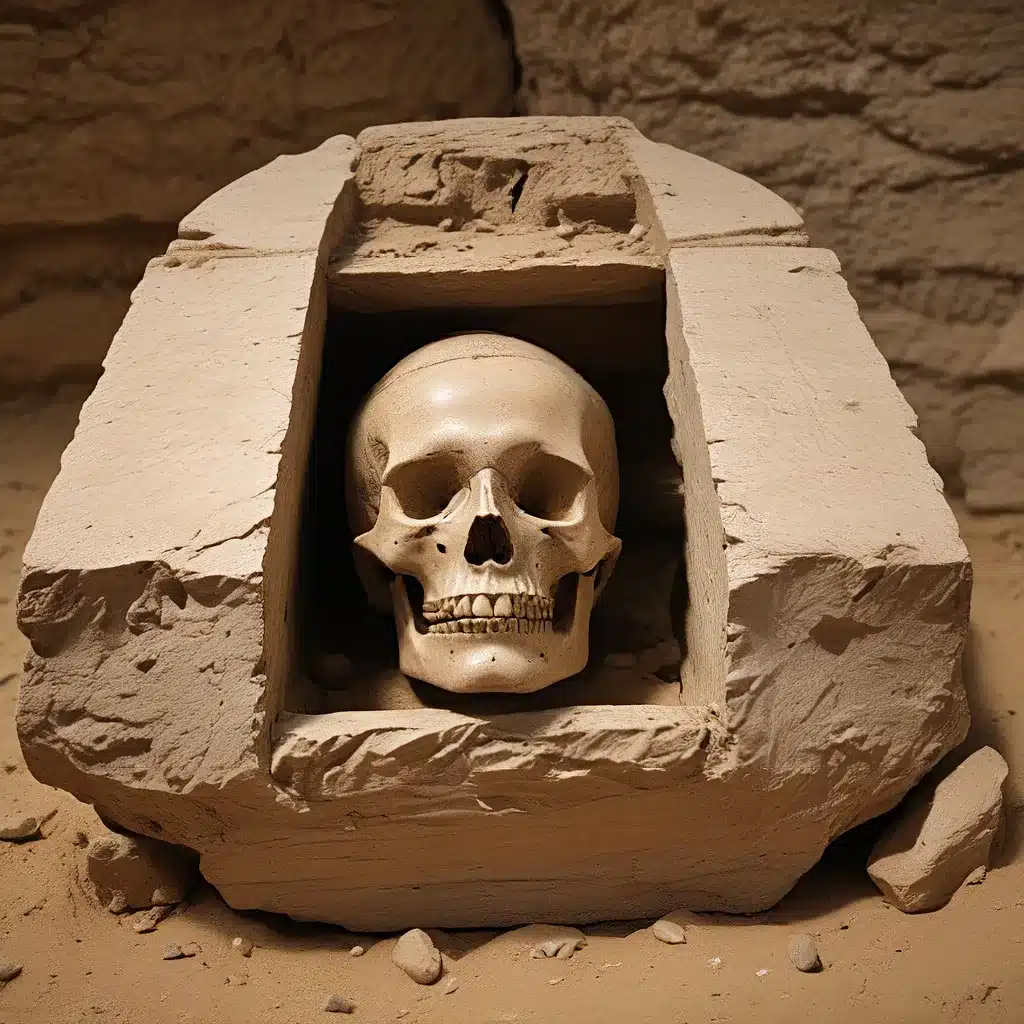
Exploring the Enigmatic World of Mummy Portraits and Cremation Burials
In the captivating realm of archaeological discoveries, few artifacts hold as much allure and intrigue as the mummy portraits and cremation burials from the ancient world. These evocative remnants of bygone eras offer a tantalizing glimpse into the lives, beliefs, and cultural practices of our ancestors, inviting us to delve deeper into the mysteries of the past.
Mummy Portraits: Windows into Roman Egypt
The mummy portraits of Roman Egypt have long captivated scholars and enthusiasts alike. These remarkable paintings, created between the 1st and 3rd centuries AD, were designed to adorn the coffins of the deceased, serving as a visual representation of the individual’s likeness and identity. Conservators, scientists, and scholars have been working tirelessly to unravel the secrets behind these enigmatic works of art.
The Getty Museum’s APPEAR project, an international collaboration of 26 participating museums, has been at the forefront of this endeavor. By employing a wide range of advanced examination and analytical techniques, such as visible light examination, raking microscopic reflectance transform imaging, ultraviolet illumination, and infrared reflectography, the researchers have uncovered a wealth of new insights into the materials, methods, and artistic practices that went into the creation of these funerary portraits.
Through this meticulous study, the team has discovered hidden painted details and underdrawings that are invisible to the naked eye, as well as the use of unique pigment mixtures to achieve the desired colors. These findings not only shed light on the technical aspects of the portraits but also provide clues about the workshops and industries responsible for their production.
Marie Svoboda, a conservator at the Getty Villa, emphasizes the significance of these discoveries, stating that the insights gleaned from the APPEAR project “will not only provide a window into Roman Egypt during the first, second, and third centuries but will also allow an understanding of a beloved artistic practice that continues to this day.”
The mummy portraits are not merely historical artifacts; they are a testament to the rich cultural melting pot that thrived in Roman Egypt, where Greco-Roman artistic traditions intertwined with the enduring Egyptian funerary rituals. These portraits, sometimes even revealing the names, social status, and professions of the deceased, offer a poignant and intimate connection to the people who lived in this remarkable region over 2,000 years ago.
Cremation Burials: Unlocking the Secrets of Late Bronze Age Mobility
While the mummy portraits captivate us with their striking visual representations, the cremation burials of the Late Bronze Age in Austria provide insights into a different aspect of ancient funerary practices. This period, spanning from around 1300 to 800 BC, saw a dramatic shift in the way societies dealt with their dead, transitioning from traditional inhumation burials to the widespread adoption of cremation.
An interdisciplinary project led by the Austrian Academy of Sciences is utilizing new bioarchaeological methods, such as strontium isotope analysis and tooth cementum annulation, to investigate the ritual practices, gender dynamics, and social relations of these Late Bronze Age societies.
By analyzing the cremated human remains from cemeteries in the Traisen river valley, the researchers aim to uncover whether the shift to cremation burials was a local development or triggered by the arrival of newcomers. They also seek to determine if the deposition of the cremated bones took place immediately after the cremation or if the remains of ancestors were curated over time.
The project’s innovative approach to studying cremated human remains has yielded remarkable insights. Researchers have been able to identify local and non-local individuals by analyzing the strontium isotopes in the bones, providing clues about patterns of geographical mobility. Additionally, the use of advanced osteological techniques has allowed them to assess the age, sex, and potential status of the individuals buried in these cemeteries, shedding light on the intersection of identity categories and aspects of mobility.
These findings have the potential to significantly advance our understanding of the ritual practices, gendered mobility, and social relations that were prevalent during the Late Bronze Age in Lower Austria. By developing a comprehensive chronological framework and applying a multi-science approach, the researchers are unlocking the secrets of these ancient cremation burials, providing a deeper glimpse into the lives and beliefs of our prehistoric ancestors.
Bridging the Gap: Connecting the Past to the Present
The study of ancient funerary rituals, whether through the captivating mummy portraits or the enigmatic cremation burials, serves as a powerful bridge between the past and the present. These artifacts and the stories they hold offer a valuable opportunity to connect with our shared human experience, across the vast expanse of time.
As we continue to delve into the mysteries of the ancient world, we not only uncover the fascinating details of long-forgotten civilizations but also gain a deeper understanding of the universal human need to honor the dead and commemorate the lives of those who have come before us. Through these archaeological investigations, we are reminded that the fundamental desire to preserve memory and identity is a timeless and universal human trait.
By unlocking the secrets of ancient funerary rituals, we open a window into the hearts and minds of our ancestors, allowing us to better comprehend the cultural diversity, social dynamics, and belief systems that shaped the human experience throughout history. This knowledge, in turn, can inform our own perspectives and inspire us to approach the present with a renewed sense of empathy, understanding, and appreciation for the rich tapestry of our shared past.
The Lost Kingdoms invites you to embark on this captivating journey of exploration and discovery, where the past and present converge, revealing the enduring legacies of our ancestors and the indelible mark they have left on our world.


